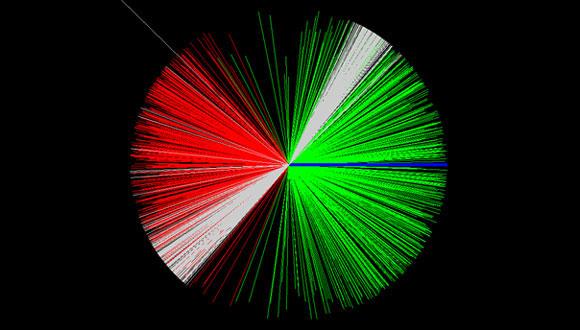Joint Seminar in Nuclear Physics
Erez Reinherz-Aronis, Colorado State University
A. S. Sorin, JINR, Dubna
M. Gai, University of Connecticut and Yale University
PROGRAM:
14:30 - 14:45 Refreshments
14:45 - 15:35 ³Neutrino Oscillation and the T2K Experiment², Erez Reinherz-Aronis, Colorado State University
15:35 - 15:50 Coffee break
15:50 - 16:40 "Vorticity in Heavy Ion Collisions², A. S. Sorin, JINR, Dubna
16:40 - 16:55 Coffee break
16:55 - 17:45 "New Symmetry of the Cluster Model², M. Gai, University of Connecticut and Yale University
Abstract First talk (Reinherz-Aronis)
Neutrino physics has entered the precision measurement era in the last years. This talk presents a brief overview on neutrino physics which will include the neutrino postulate, neutrinos puzzles and neutrino oscillation measurements. In addition, the long-baseline neutrino oscillation experiment T2K is presented, with its recent disappearance results and its future prospects like running in anti-neutrino beam mode.
Abstract - Second talk (Sorin)
The hydrodynamic vorticity and helicity and their possible manifestations in matter forming in non-central heavy ion collisions will be discussed.
Abstract - Third talk (Gai)
Recent measurements of the structure of 12C [1] using an optical readout TPC
(O-TPC) [2] and gamma beams allowed the first study of the rotation vibration spectrum of 12C which appears strikingly similar to the spectrum predicted by a new algebraic cluster model [3] employing a geometrical (D3h) symmetry with predicted recurring rotational bands including the states: 0+, 2+, 3-, (degenerate) 4+ and 4-, 5- etc [4,5]. Such structures and symmetries are common in molecular physics, but have been observed in nuclear physics for the first time. This model also allow us to elucidate the structure of the Hoyle state and as such it is in conflict with ab-initio effective field theory calculations on the lattice [5] that predict different structure of the Hoyle state. The calculations on the lattice on the other hand use the Hoyle state to conclude the masses of light quarks and the strength of the electromagnetic interaction (within the anthropic view of the universe). Extension of this study to the newly constructed ELI-NP gamma ray facility in Bucharest with a Warsaw-UConn electronic readout TPC (eTPC) will be discussed.
[1] W.R. Zimmerman et al.; Phys. Rev. Let. 110, 152502 (2013).
[2] M. Gai et al.; JINST 5, 12004 (2010).
[3] R. Bijker and F. Iachello; Ann. Phys. 298, 334 (2002).
[4] D.J. Marin-Lambarri et al.; Phys. Rev. Lett. 113, 012502 (2014).
[5] Hamish Johnston, Physicsworld.com: http://physicsworld.com/cws/article/news/2014/jul/08/carbon-nu.
[6] E. Epelbaum et al.; Phys. Rev. Lett., 110, 112502 (2013).
Seminar Organizer: Ami Leviatan, Eli Piasetzky and Itzhak Tserruya


